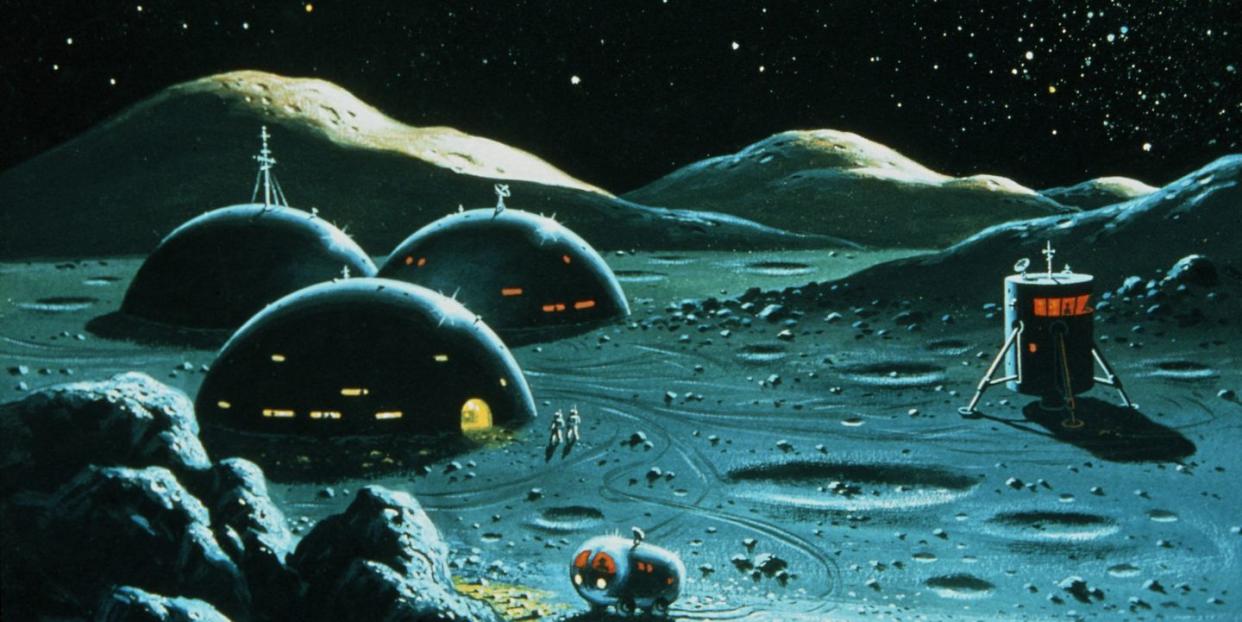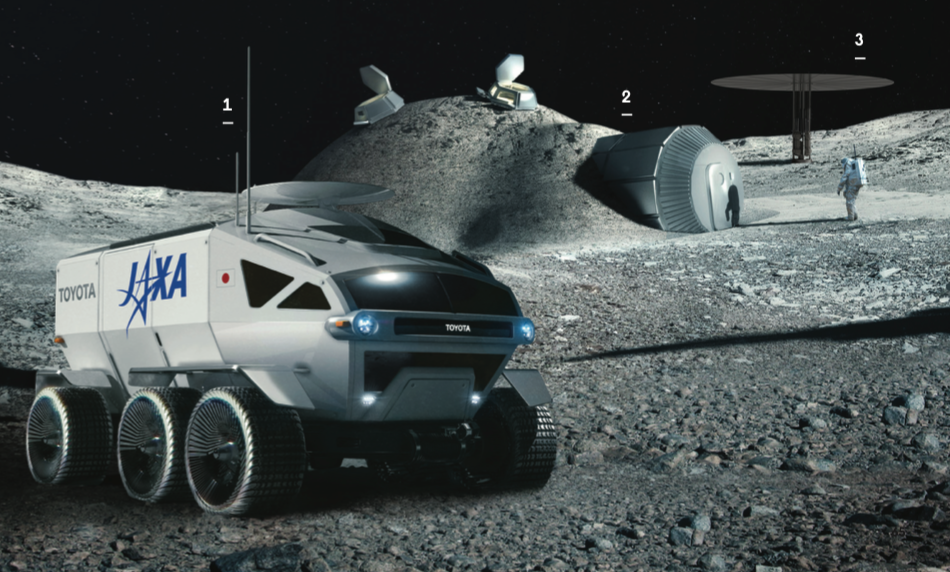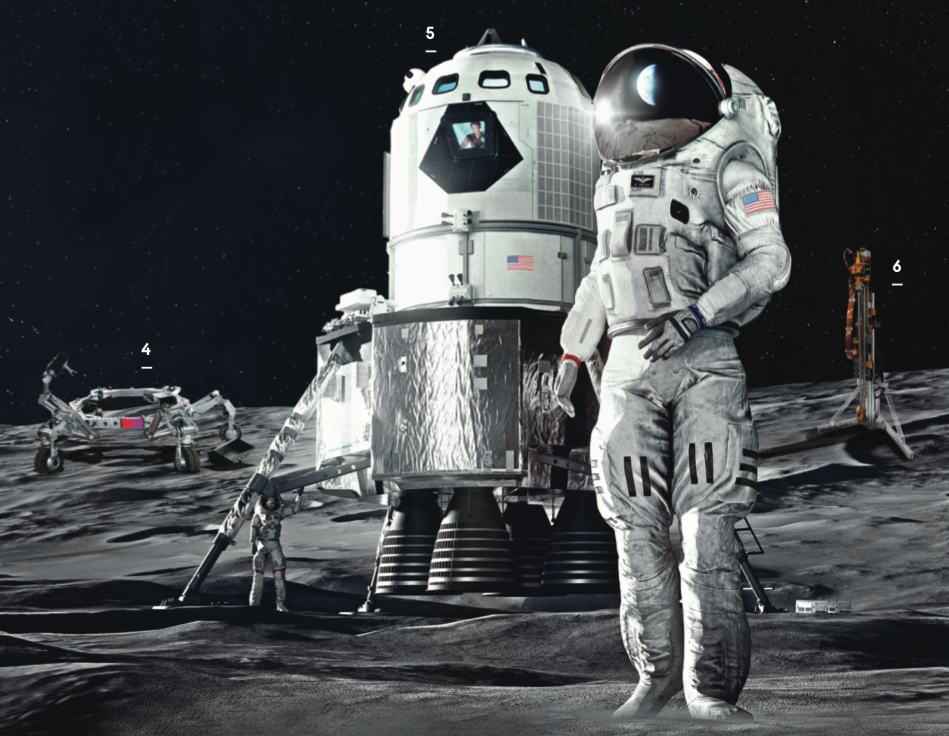What Would a 21st Century Moon Base Look Like?

NASA's Artemis program, along with the Lunar Gateway, is singularly focused on humanity's return to the moon. But unlike the Apollo program, NASA will be leaning on companies to provide a lot of the hardware and know-how. And some of them have already submitted designs.
Piecing together these disparate visions for humanity's first off-planet outpost, we get a slowly evolving picture of what a lunar colony might look like.

No. 1: The Next Lunar Rover Will Be SUV-Comfy
The rides of the future won’t require passengers to be in those pressurized spacesuits the Apollo astronauts wore. The vehicles themselves will be pressurized so scientists or tourists can ride in comfort and only have to suit up for excursions outside the rover. The hottest design concept yet has come fromJAXA (Japanese Aerospace Exploration Agency) and Toyota. This rover, about the size of two microbuses, can fit two passengers and gear comfortably, four in a pinch. It runs on fuel cells to a range of about 6,213 miles and unfurls solar panels to generate power.
No. 2: Moonies Will Dwell in Hobbit Holes
Due to extreme temperatures, no oxygen, the threat of meteorites, and the constant barrage of radiation from the sun, our lunar crib will have to be built like a castle. Early landers will become shelters buried in craters and covered with a protective layer of moon rocks and dust by robotic excavators. Inhabitants might access the habitat through around airlock dug into a mound, an aesthetic that Bilbo Baggins could appreciate.
No. 3 We’ll Pack Portable Power Plants
NASA is developing trashcan-sized nuclear reactors to provide steady power for a lunar colony. The presence of near-constant sunlight at some parts of the South Pole, like the Shackleton Crater, are great for solar power, but the first inhabitants will need a more reliable energy source, right away. A solid block of uranium-235 nuclear fuel the size of a paper-towel roll will generate heat to boil sodium at 1,600°F inside eight tubes, which will transfer energy to a Stirling engine to turn heat into electricity.

No. 4 Moon Ubers Will Taxi People and Cargo
The Jet Propulsion Laboratory’s All-Terrain Hex-Limbed Extra-Terrestrial Explorer (yes, ATHLETE) has already demonstrated the ability to grip pallet cargolike two burly movers carrying a dining room table into a house. The six articulated limbs of the robotic vehicle can roll or step over obstacles and switch out quick-connect digging and gripping tools as needed. Ideally, these large vehicles would also carry passengers to and from the launch pad, making it a lunar airport Uber.
No. 5: Lunar Landers Will Be Light, Fast, and Reusable
From major aerospace behemoths to scrappy start-ups, companies are scrambling to develop the next lunar landers. Just this past May, Amazon CEO Jeff Bezos, founder of the private space-flight company Blue Origin, revealed Blue Moon, a lunar lander to be deployed as early as 2024. Because lunar landers like these won’t re-enter Earth’s punishing atmosphere, they will be reusable, transporting crew and cargo to and from the moon many times. Lockheed Martin’s concept is designed to dock with the Orion spacecraft and will launch on NASA’s SpaceLaunch System(SLS) heavy-lift megarocket.
No single trip will deliver everything humans will need to colonize. So, we’ll build a dedicated area for vertical takeoffs and landings. All we need is a flat area of stable regolith surrounded by berms to mitigate the spray of lunar dust when retro-rockets fire.
No. 6: We’ll Mine Ice for Fuel
The moon has two things going for it as a way-station to Mars: It has one-sixth the gravity of Earth, so it won’t take as much power to break through moon’s grip, and it has ice, which we can make into hydrogen-oxygen rocket propellant. Water, after all, is the oil of the solar system. One way to get at the raw material is The Regolith and Ice Drill for Exploration of New Terrains (TRIDENT), a rotary-percussive drill designed for drilling into ice-cemented regolith and rock. Other robotic contraptions would process the fuel and transport it to an orbiting “gas station” where rockets heading to Mars could dock to top up.
This article appeared in the July/August 2019 issue of Popular Mechanics. You can subscribe here.
You Might Also Like

